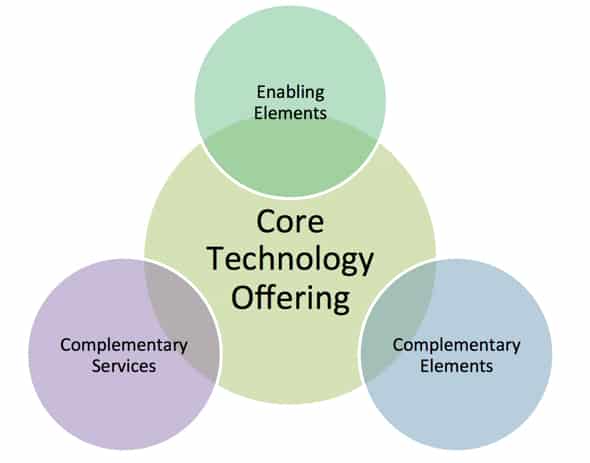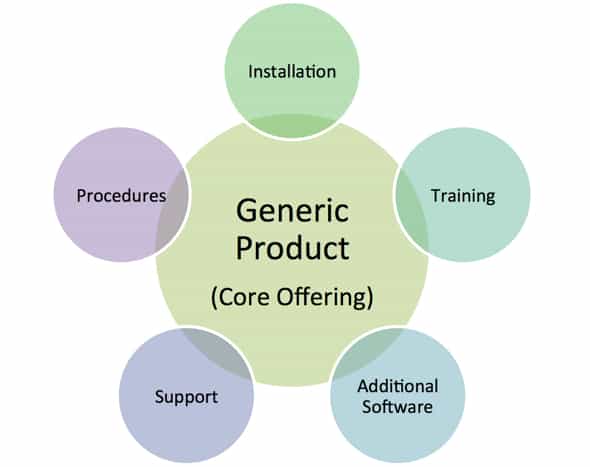|
|
ARCHIVED CONTENT
You are viewing ARCHIVED CONTENT released online between 1 April 2010 and 24 August 2018 or content that has been selectively archived and is no longer active. Content in this archive is NOT UPDATED, and links may not function.
Author’s Note: Expanding on the original article, Considering Third Generation Discovery? Two Approaches for Evaluating eDiscovery Offerings1, this update comprehends the expansion of design focus, capabilities, and flexibility for eDiscovery technology offerings since 2009. This is part one of a two-part update.
Considering Fourth Generation eDiscovery Technology
With the many products and services available in the marketplace today, the need to be able to uniformly contrast and compare eDiscovery technologies continues to grow. Though more and more vendors are providing tools and techniques tools that can help in considering and comparing their offerings, there continues to be a need for comparison frameworks to help eDiscovery practitioners systematically evaluate the technology in available offerings.
Two Approaches for Comparing eDiscovery Technology Offerings
With the need for thorough and holistic comparisons mind, this article provides a high-level overview of two approaches that legal and information technology professionals may find useful as they consider eDiscovery technology.
The first approach, based on Geoffrey Moore’s whole product concept2, consists of taking into account all elements of a technology offering to help create a complete offering comparison.
The second approach, based on a generational model view of eDiscovery technology, helps individuals compare offerings’ value based on their capability, flexibility, delivery method, and security.
Using these approaches to consider offerings across four generations of eDiscovery technology may help legal professionals not only determine the best eDiscovery technology available but also determine the best eDiscovery technology for their particular needs.
The Elements of a Complete Technology Offering
Before one can actually compare technologies, one needs to understand the specific elements of a complete eDiscovery technology offering. So what is a complete technology offering? In 1991 author Geoffrey Moore introduced the whole product concept to help technology leaders develop and deliver offerings that would be considered complete in the mind’s eye of the user. This concept highlighted the fact that a whole product consists of not only a core offering but also includes additional elements that help drive the value of the core offering (Figure 1).

Figure 1 – Example Whole Product Diagram3
In adapting the whole product concept for electronic discovery technologies, it appears reasonable to suggest that a complete eDiscovery technology offering might consist of the following:
Core eDiscovery Technology4 (One or More of the Following Capabilities)
- Planning: Tasks designed to maintain the integrity of electronically stored information (ESI) and facilitate the conduct of ESI discovery throughout the litigation lifecycle.
- Preserving: Tasks designed to keep ESI safe from danger or harm throughout the litigation lifecycle.
- Preparing: Tasks designed to make appropriate ESI ready for examination and evaluation.
- Reviewing: Tasks designed to examine and evaluate ESI in relation to audit, investigation or litigation objectives.
- Sharing: Tasks designed to allow others to use appropriate ESI as part of an audit, investigation or litigation.
Enabling Elements (Two or More of the Following Elements)
- Hardware: The mechanical and electronic components that constitute a computer system.
- Software: The set of instructions (programs) that cause a computer to perform one or more tasks.
- Connectivity: The infrastructure that allows computer networks to link to people and resources.
Complementary Elements (One or More of the Following Elements)
- Architecture: The design of a computer system that sets the standard for all devices that connect to it and all the software that runs on it. It is based on the programs that will run and the number of programs that run concurrently.
- Protocols: The formats and procedures that govern the transmitting and receiving of data.
- Interfaces: The way users communicate with the computer.
Complementary Services (One or More of the Following Services)
- Consulting: Providing expertise and specialized advice.
- Training: Providing users familiarization and proficiency through specialized instruction and practice.
- Support: Providing assistance through attempting to help the users solve specific problems with an offering.
By understanding the elements of the whole product and applying it to eDiscovery to form a basis for a complete eDiscovery technology offering (Figure 2), one can then begin to compare uniformly and contrast eDiscovery technology offerings in a systematic and comprehensive manner.

Figure 2 – The Complete Discovery Technology Offering
Another methodology that may be useful in comparing eDiscovery technology offerings is the generational model of eDiscovery technology classification.
A Generational Model of eDiscovery Classification
Generational models of classification are not new to technology. These models have driven discussions of such important technologies such as computers5 and wireless connectivity6. The classification of technology generations is generally based on a new design or approach that truly changes the way the technology performs. When considering eDiscovery technologies, this same classification approach appears to be a reasonable way to consider comparisons between offerings. With design, integration, and automation attributes in mind, current eDiscovery technology offerings seem to fall into one of the four generational categories depicted in Table 1.
Building Blocks 3Table 1 – Generational Look at eDiscovery Offerings
Generational Differences in Design Focus
In considering the differences in design focus, it appears that eDiscovery technology offerings in the marketplace today were either adapted for eDiscovery or designed for eDiscovery. Depending on particular needs, this generational difference may or may not be important in choosing an eDiscovery offering. However, it does appear reasonable to assert that eDiscovery offerings that were not designed specifically for eDiscovery may run the risk over time of lacking both the capability and flexibility to meet the time, cost and complexity challenges7 facing eDiscovery practitioners.
Generational Differences in Integration Approach
In considering the differences in integration focus, it appears that eDiscovery technology offerings in the marketplace today were also adapted for eDiscovery task integration or designed for eDiscovery task integration. Depending on specific needs, this generational difference also may or may not be important in choosing an eDiscovery offering. However, it also appears reasonable to assert that eDiscovery offerings that were not designed specifically for eDiscovery integration may run the risk over time of lacking both the capability and flexibility to meet the time, cost and complexity challenges facing eDiscovery practitioners.
Generational Differences in Automation Approach
In considering the differences in automation focus, it appears that most eDiscovery technology offerings in the marketplace today either were not designed to support task automation or have been adapted or reengineered for task automation after the initial release. However, there are recently developed offerings were designed to provide for the automation of eDiscovery tasks. These newer offerings designed for eDiscovery, task integration, and task automation appear to offer eDiscovery professionals with the best balance of capability and flexibility available for addressing the top challenges in managing eDiscovery requests. Top challenges8 that include:
- Volume and Types of Data
- Increasing Legal and Regulatory Requirements
- Inadequate Technology
- Lack of Personnel
- Budgetary Constraints
- Data Security
Depending on particular needs, this generational difference may or may not be important in choosing an eDiscovery technology offering. However, as with previous generations of eDiscovery technology offerings, it does appear reasonable to assert that eDiscovery offerings that were not designed specifically for eDiscovery automation may run the risk over time of lacking both the capability and flexibility to meet increasing time, cost and complexity challenges facing eDiscovery practitioners.
Click here for part two of this two-part update.
—
1 Robinson, W. R. (2009). Considering Third Generation eDiscovery? Two Approaches for Evaluating eDiscovery Offerings. Austin, TX: Orange Legal Technologies.
2 Geoffrey A. Moore. Crossing the Chasm: Marketing and Selling High-Tech Products to Mainstream Customer. New York: Harper Business, 1991, Revised 2006.
3 Wikipedia: Whole product. (n.d.). Retrieved January 10, 2016, from http://www.factbook.org/wikipedia/en/w/wh/whole_product.html
4 A Basic eDiscovery Framework: One Way To Align Three Differing Approaches. (2012, November 30). Retrieved from http://www.complexdiscovery.com/info/2012/11/30/a-basic-ediscovery-framework-one-way-to-align-three-differing-approaches/
5 The Five Generations of Computers – Webopedia. (2015, December 9). Retrieved from http://www.webopedia.com/DidYouKnow/Hardware_Software/FiveGenerations.asp
6 Generations of Wireless Communication Technology – Tutorvoice. (2015, October 11). Retrieved from https://complexdiscovery.com
7 Three Decision Drivers in eDiscovery Sourcing: Cost, Time and Complexity. (2014, February 10). Retrieved from http://www.complexdiscovery.com/info/2014/02/10/three-decision-drivers-in-ediscovery-sourcing-cost-time-and-complexity/
8 Stratifying eDiscovery: Baseline Considerations for Market Segmentation. (2015, December 4). Retrieved from http://www.complexdiscovery.com/info/2015/12/04/stratifying-ediscovery-baseline-considerations-for-market-segmentation/






















